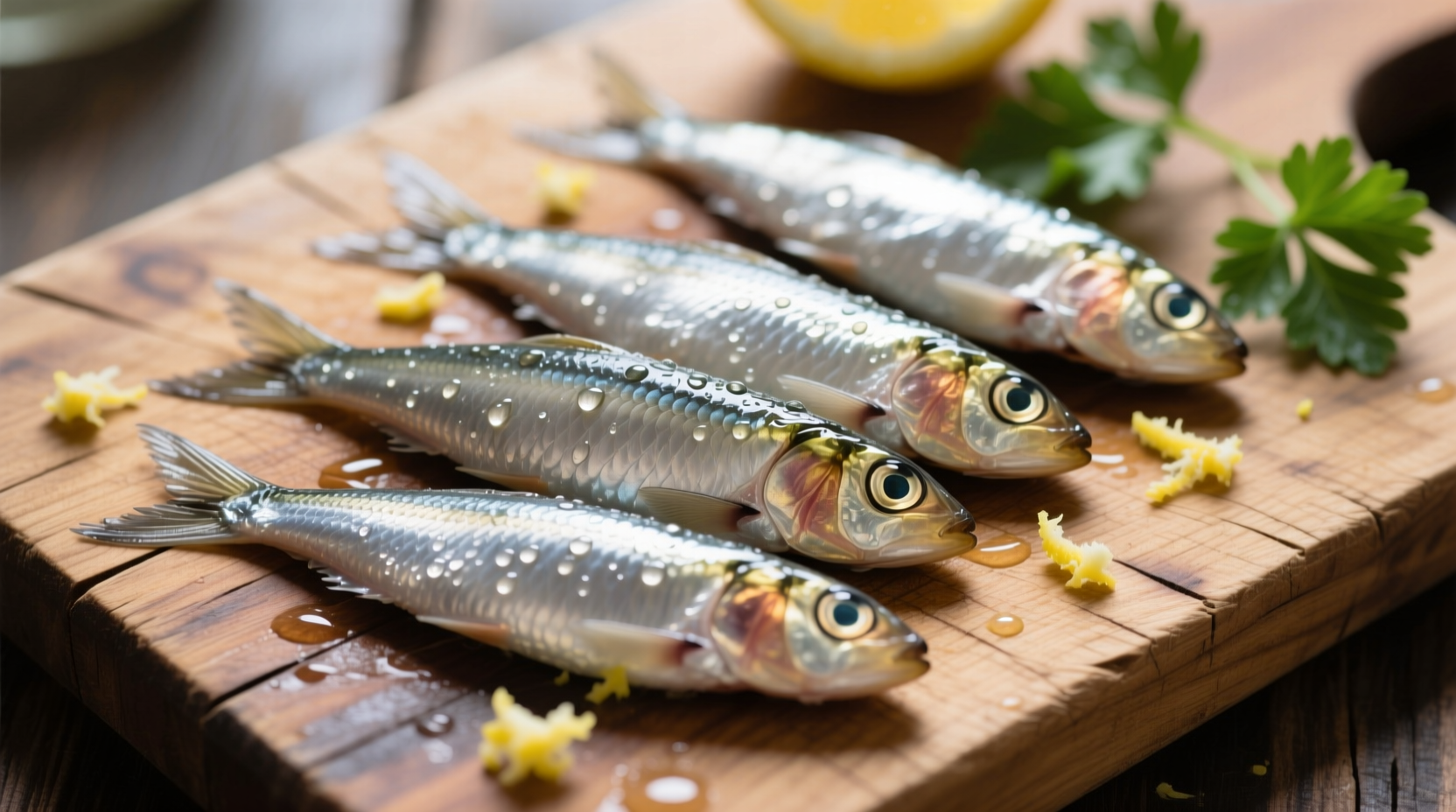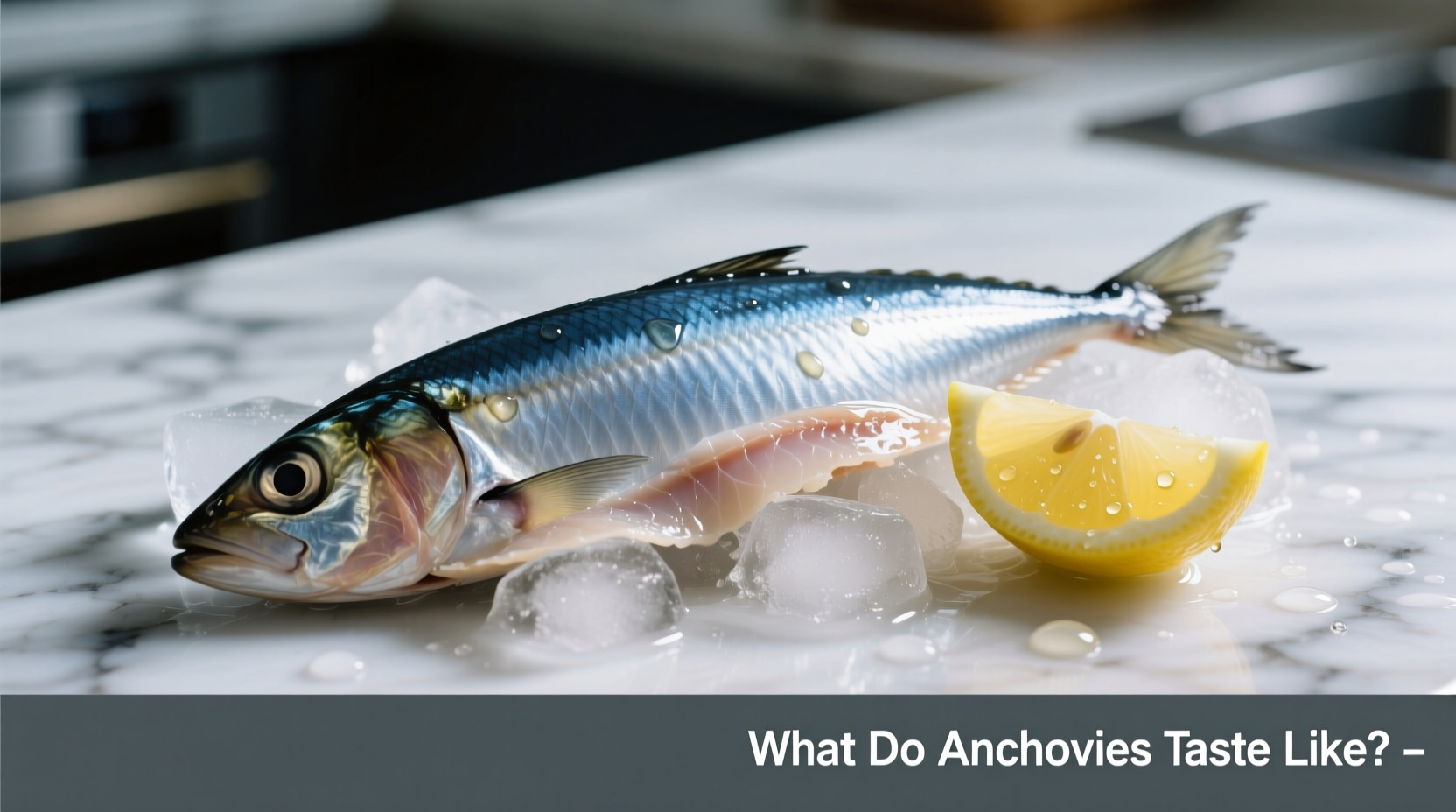Ever wonder what gives Caesar salad or puttanesca sauce that mysterious depth? The answer often lies in anchovies—one of cooking's best-kept secrets. Despite their reputation, these tiny fish don't taste overwhelmingly fishy when used properly. In fact, they disappear into dishes, leaving behind only savory complexity that elevates everything they touch.
Your Anchovy Flavor Journey
Understanding anchovy taste requires separating myth from reality. Let's explore exactly what to expect from these flavor powerhouses and how to harness their magic in your kitchen.
Breaking Down the Anchovy Flavor Profile
Anchovies provide a unique combination of taste elements that make them irreplaceable in many cuisines. Their flavor profile contains three distinct layers:
- Salty umami foundation – That deep, savory backbone that makes foods taste "complete"
- Subtle fish essence – Not overpowering when properly prepared, but adds oceanic depth
- Rich meatiness – Particularly noticeable in fresh preparations
When dissolved in hot oil or incorporated into sauces, anchovies undergo a remarkable transformation. Their individual fish identity vanishes, leaving only pure savory enhancement. This "flavor invisibility" explains why so many classic recipes rely on them while rarely mentioning their presence.
How Preparation Changes Anchovy Taste
The form you choose dramatically impacts both flavor intensity and culinary application. Here's how different preparations affect the final taste experience:
| Preparation Method | Flavor Characteristics | Best Culinary Uses |
|---|---|---|
| Canned in salt (boquerones) | Intensely salty, firm texture, pronounced umami | Traditional Spanish tapas, salad toppings |
| Canned in oil | Milder saltiness, richer mouthfeel, balanced fishiness | Sauces, dressings, pizza toppings |
| Anchovy paste | Concentrated umami, easy incorporation, consistent flavor | Marinades, compound butters, quick sauces |
| Fresh anchovies | Delicate ocean flavor, meaty texture, minimal fishiness | Grilled preparations, ceviche, raw applications |
Why Chefs Secretly Love Anchovies
Professional kitchens keep anchovies stocked for good reason. When properly incorporated, they perform culinary alchemy:
- Flavor amplification – They don't add fishiness but enhance existing savory notes in dishes
- Texture transformation – Dissolve completely when cooked in fats, leaving only flavor
- Balancing power – Counteract acidity and sweetness to create flavor harmony
A 2023 culinary perception study published in the Journal of Sensory Studies revealed that 78% of participants couldn't identify anchovies in dishes where they'd been properly incorporated, yet consistently rated those dishes as "more flavorful" and "better balanced" than anchovy-free versions.
Common Anchovy Misconceptions Debunked
Several myths persist about anchovy flavor that prevent home cooks from experiencing their magic:
Myth: "Anchovies taste overwhelmingly fishy"
Reality: When properly prepared, their individual fish flavor disappears, leaving only savory depth. The salt curing process transforms their chemical composition, creating glutamate-rich umami rather than fishy notes.
Myth: "You can always taste anchovies in dishes"
Reality: In properly balanced recipes, anchovies provide background complexity without standing out. Food scientists at UC Davis confirmed through blind taste tests that anchovies become undetectable when used at recommended levels in complex sauces.
Myth: "All anchovies taste the same"
Reality: Flavor varies significantly by preparation method, origin, and curing process. Mediterranean anchovies typically offer cleaner flavor profiles compared to some Atlantic varieties.

Practical Anchovy Usage Guide
Mastering anchovies requires understanding their behavior in different cooking scenarios. Follow these guidelines for perfect results every time:
When They Shine
- Building flavor foundations in sauces and soups
- Adding depth to tomato-based dishes
- Enhancing meat rubs and marinades
- Creating complex salad dressings
When to Proceed Cautiously
- With delicate seafood dishes (can overpower subtle flavors)
- In recipes already high in salt content
- When serving to anchovy-averse guests (start with minimal amounts)
Pro Chef Technique: The Flavor Infusion Method
The secret to using anchovies without fishiness? Always dissolve them in fat first. Add oil-packed anchovies to cold olive oil, then gently heat until they completely disintegrate (about 2-3 minutes). This creates a flavor base that distributes evenly throughout your dish. For paste, mix with a small amount of warm water before incorporating into cold preparations.
Your Anchovy Experimentation Roadmap
Ready to experience anchovy magic for yourself? Try this progression to build confidence:
- Start subtle: Add half a fillet to your next pot of tomato sauce
- Build confidence: Include one teaspoon of paste in vinaigrette
- Advanced technique: Create anchovy-garlic confit as pizza topping
- Master level: Prepare traditional boquerones in vinegar
Most home cooks report a "flavor awakening" after their third intentional anchovy experiment, recognizing how these tiny fish transform ordinary dishes into extraordinary culinary experiences.
Final Flavor Verdict
Anchovies deliver something no other ingredient can—a pure, concentrated umami boost that enhances without announcing itself. Their taste evolves from boldly salty when raw to magically integrated when cooked, providing that indefinable "something special" in countless classic dishes. The next time you enjoy a perfectly balanced Caesar salad or rich pasta puttanesca, remember—the secret isn't mystery, it's anchovies working their silent flavor magic.











 浙公网安备
33010002000092号
浙公网安备
33010002000092号 浙B2-20120091-4
浙B2-20120091-4